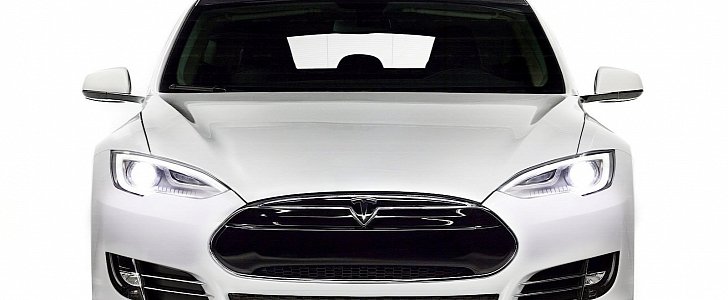The fatal crash that involved a Tesla Model S driving with Autopilot activated has raised interesting discussions regarding the capabilities of self-driving systems.
Tesla has previously explained that the Autopilot system has received an update in January 2016 which allows automatic emergency braking if it detects an “interruption of the ground plane in the path of the car.”
However, Tesla does mention that the action is only performed after the object is cross-checked against a consistent radar signature.
The radar signature indicated might be the presumed cause that led to the system not being able to identify the side of a white trailer as opposed to an overhead road sign.
While this conclusion is not yet definitive, the explanation could justify the actions of the Autopilot system, which is described as a feature which is in the public testing phase.
In a statement for Street Insider, tech supplier Mobileye explains that the accident which involved the Tesla Model S and a tractor-trailer could not have been avoided by the system alone, The Verge reports. Mobileye representatives emphasized that current automatic emergency braking systems are qualified to observe imminent rear-end collisions, and are designed specifically for that function.
Instead, the fatal accident that took place at the beginning of May involved a laterally crossing vehicle, which is a factor that has not been designed into current systems. In layman's terms, the current-generation autonomous emergency braking systems are not meant to act if they detect a vehicle that crosses their path from the side of the road.
Instead, Mobileye explains that the capability to detect vehicles that make a lateral turn across the path of another car will come in 2018, as the EuroNCAP will only start testing and rating the systems in 2020 for this feature.
Mobileye recently signed a partnership with BMW and Intel to bring autonomous vehicles on the road by 2021. The supplier also provides some components to Tesla Motors, but is not the sole provider of sensors and technology used by the American automaker.
Concerning the fatal accident involving a Tesla Model S that was being driven using Autopilot, several opinions have arisen. Some criticize Tesla for letting users test a feature which has not been fully developed for public roads, while others accuse irresponsible drivers of being distracted while using the system.
Tesla has warned each driver to be ready to take control at any moment after activating Autopilot, but this is not enough to stop some from throwing trash at the automaker. No matter who was at fault for this accident, popular confidence in self-driving cars has decreased from where it stood before the fatal incident.
However, Tesla does mention that the action is only performed after the object is cross-checked against a consistent radar signature.
The radar signature indicated might be the presumed cause that led to the system not being able to identify the side of a white trailer as opposed to an overhead road sign.
While this conclusion is not yet definitive, the explanation could justify the actions of the Autopilot system, which is described as a feature which is in the public testing phase.
In a statement for Street Insider, tech supplier Mobileye explains that the accident which involved the Tesla Model S and a tractor-trailer could not have been avoided by the system alone, The Verge reports. Mobileye representatives emphasized that current automatic emergency braking systems are qualified to observe imminent rear-end collisions, and are designed specifically for that function.
Instead, the fatal accident that took place at the beginning of May involved a laterally crossing vehicle, which is a factor that has not been designed into current systems. In layman's terms, the current-generation autonomous emergency braking systems are not meant to act if they detect a vehicle that crosses their path from the side of the road.
Instead, Mobileye explains that the capability to detect vehicles that make a lateral turn across the path of another car will come in 2018, as the EuroNCAP will only start testing and rating the systems in 2020 for this feature.
Mobileye recently signed a partnership with BMW and Intel to bring autonomous vehicles on the road by 2021. The supplier also provides some components to Tesla Motors, but is not the sole provider of sensors and technology used by the American automaker.
Concerning the fatal accident involving a Tesla Model S that was being driven using Autopilot, several opinions have arisen. Some criticize Tesla for letting users test a feature which has not been fully developed for public roads, while others accuse irresponsible drivers of being distracted while using the system.
Tesla has warned each driver to be ready to take control at any moment after activating Autopilot, but this is not enough to stop some from throwing trash at the automaker. No matter who was at fault for this accident, popular confidence in self-driving cars has decreased from where it stood before the fatal incident.

